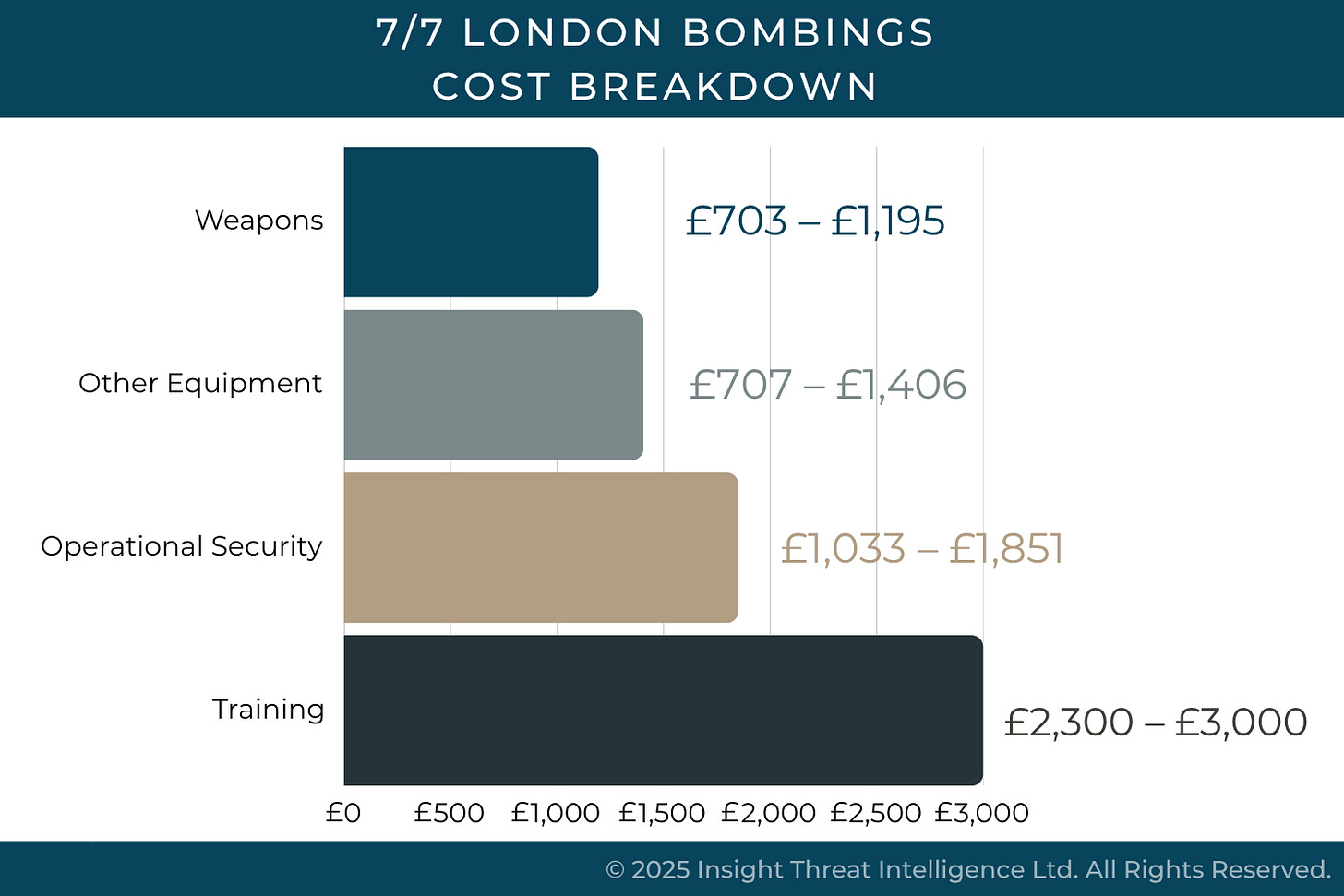20 years after 7/7: a retrospective analysis of the financing of the devastating terrorist attack
Attack Profile
Today marks the 20th anniversary of the 7/7 attacks, an event that influenced the direction of counter-terrorism policy in the UK and the European Union. The coordinated suicide bombings killed 52 people and injured over 770 others, making it one of the deadliest terrorist attacks in UK history. In the following years, more resources were allocated to counter-terrorism, particularly within the UK’s domestic Security Service (MI5). Along with the 2004 Madrid bombings, the 7/7 attacks contributed to the development of the EU’s first comprehensive Counter-Terrorism Strategy, adopted in November 2005.
This article breaks down the costs of the attack and how it was financed.
Attack Details
In the early hours of July 7, 2005, four suicide bombers, Mohammad Sidique Khan, Shehzad Tanweer, Hasib Hussain, and Jermaine Lindsay, prepared for the terrorist attack. Around 4 a.m., Tanweer, Khan, and Hussain traveled in a Nissan Micra from Leeds to Luton, stopping to refuel and buy supplies, while Lindsay arrived separately in a Fiat Brava. At Luton station, they transferred items between cars, each carrying large backpacks with explosives. After passing through ticket barriers, the bombers split up. At about 8:50 a.m., Khan, Tanweer, and Lindsay detonated bombs on three London Underground trains near Aldgate, Edgware Road, and Russell Square stations. Hussain was later seen buying a 9V battery at King’s Cross station, possibly to power his device if it initially failed. At 9:47 a.m., Hussain set off a fourth bomb on a double-decker bus in Tavistock Square.




